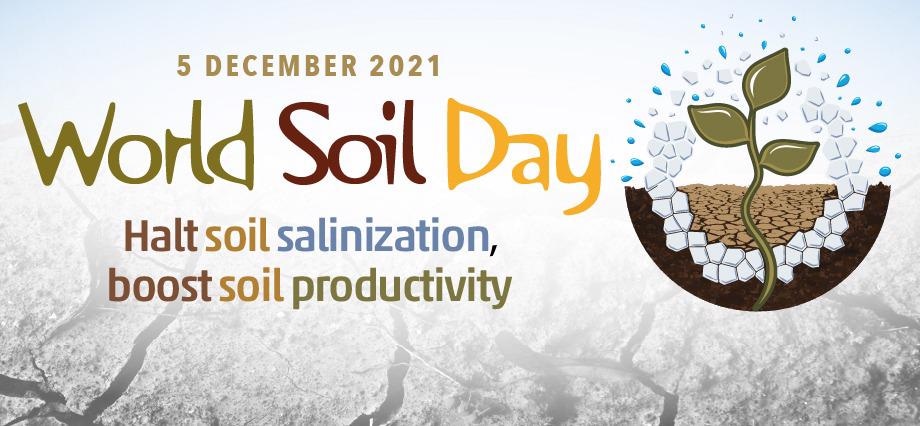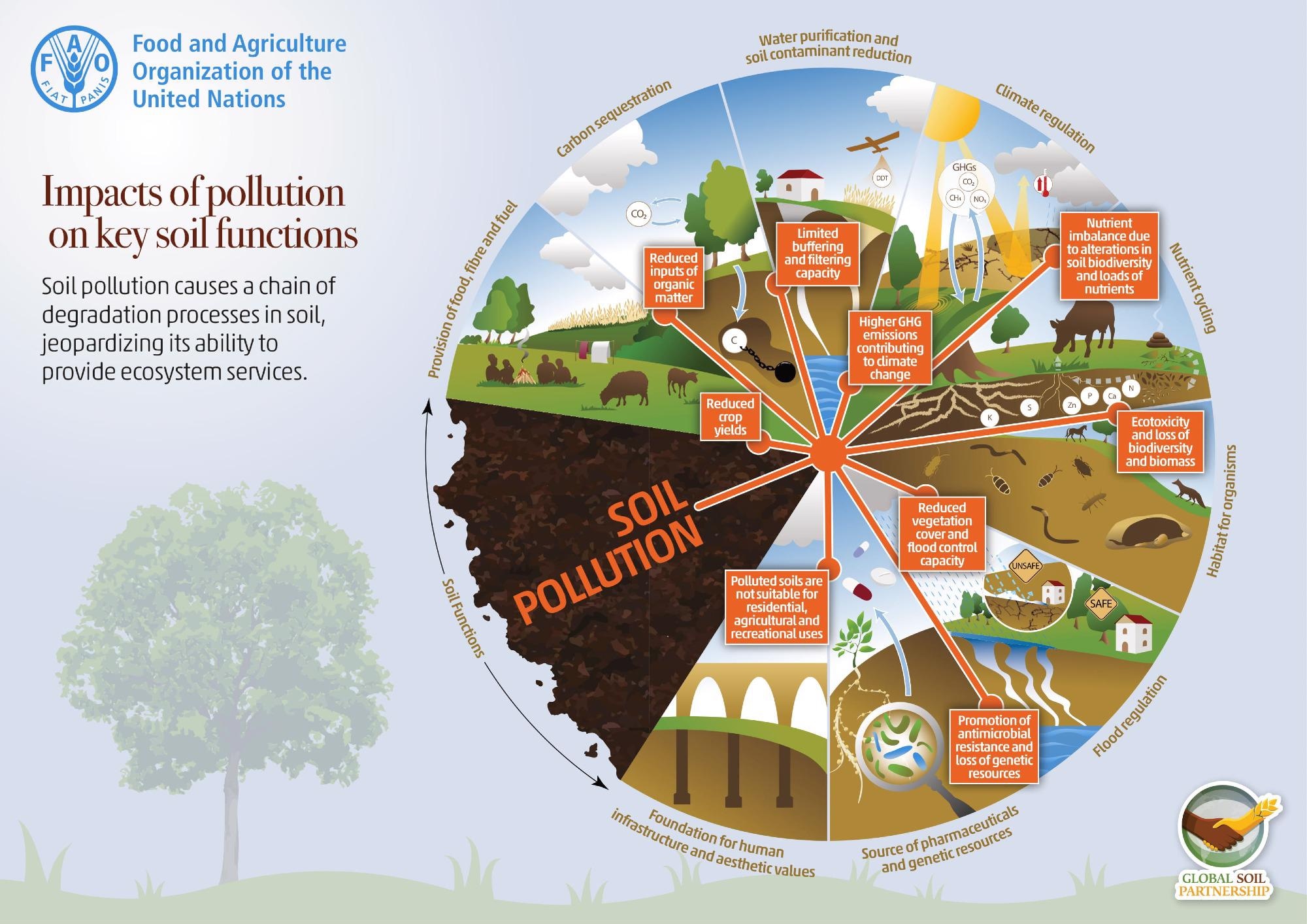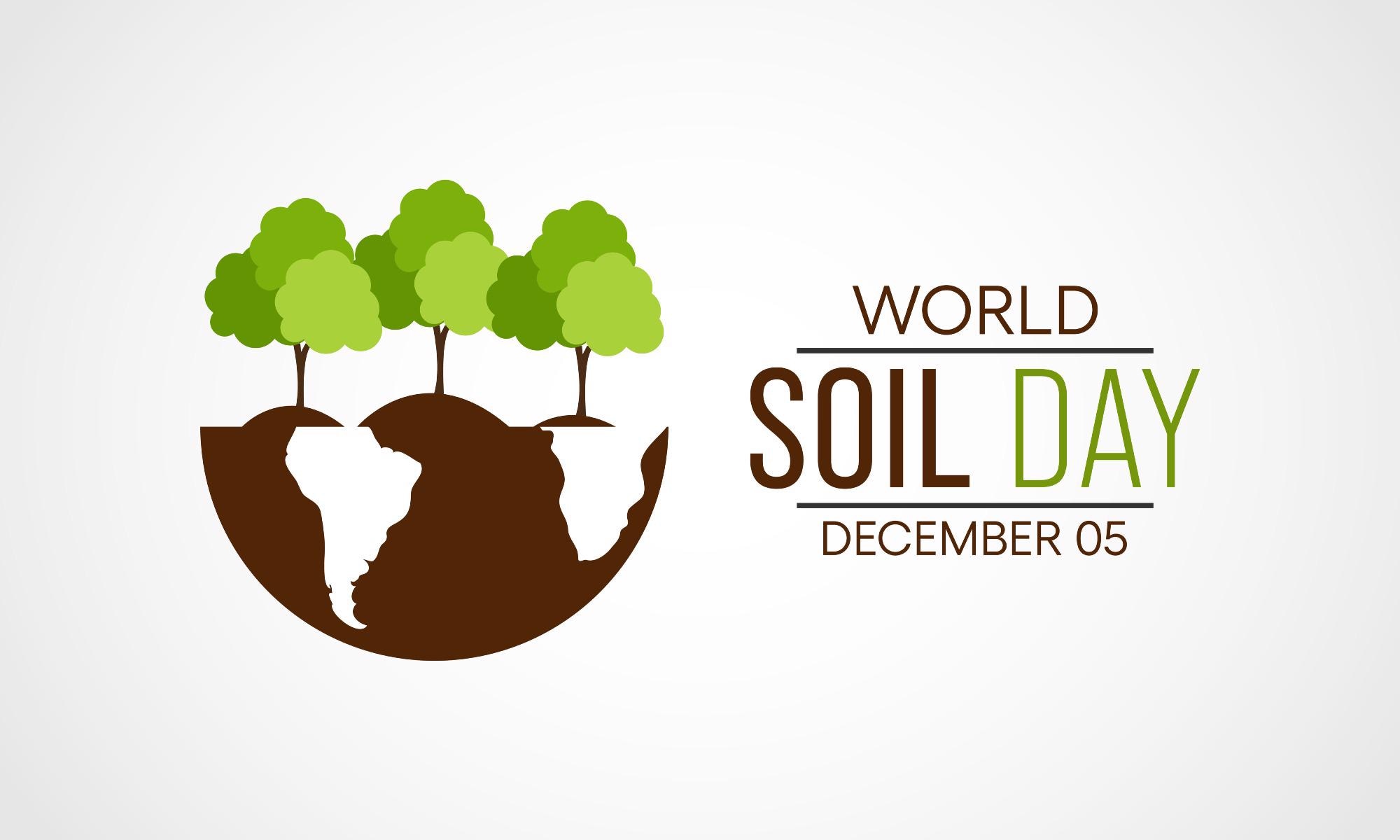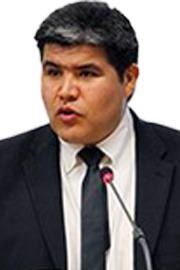For World Soil Day, we spoke to Ronald Vargas, the Soils and Land Management Officer at the FAO, about the importance of soil health and the need to raise awareness surrounding it.
Please can you introduce yourself and tell us about your role at the FAO?
My name is Ronald Vargas and I am the secretary of the Global Soil Partnership. My role is to facilitate the work of this partnership. The partnership was established to promote sustainable soil management at all levels, from global to local.
What inspired your career into the agricultural sector and, specifically, soil?
My family comes from the agriculture sector. My grandfather had a big farm back home in Bolivia and when I was very young I witnessed and was part of the agricultural profession. I witnessed how nice, but at the same time how risky and challenging it was to be in the agriculture sector.
We had a variety of different crops and I realized that whilst there are many production factors, if we did not have good soil we did not have good production. I realized that soils were very important.
I have always been related to agriculture because of my family and then when I went to university I decided to study agronomy. In agronomy, you have to specialize and so I choose soils because of my childhood both playing with soil and using it for agriculture. I realized how important it was and I was very much connected to it. That was a natural selection for me and since then I feel lucky that I have been working on soils throughout my career.

Image Credit: Johan Larson/Shutterstock.com
Poor soil management will be a threat to food production, increasing the global health problem concerning food security. What are some of the biggest challenges currently faced by soil?
Something important to point out is that soil health is crucial for human health because of its connection to food. We all need nutritious food free of contaminants, pathogens, and so forth which farmers are usually very much concentrated on.
However, we know that soils also provide other consistent services. Farmers are not always aware of them; they are connected to food production because that is their main goal and job, but many consistent services are invisible to them and are not valued by society. Food production is very important, but soils provide many other services. When talking about the main issues that we are currently facing, we need to note these consistent services.
For instance, we have identified 10 mild soil threats that are taking place everywhere. There is no single region around the world that is without soil degradation issues. We start with the most common one, soil erosion, which is the removal of the topsoil by water or wind due to unnatural processes, particularly human activities.
From that, we go on to a wider spectrum including nutrient imbalance due to overusing or underusing nutrients and taking everything from our soils. The loss of soil organic carbon, the loss of soil biodiversity, compaction, soil ceiling, acidification, salinization - all those are threats that are taking place.
Sometimes these threats are natural and controlled by nature, but the most difficult ones are those induced by unsustainable human activities. They just take and take everything from soils, but they do not give anything back. One of the threats that deserves special attention is soil pollution because that is one of the most difficult ones. We all know that it is taking place but we prefer to avoid it because otherwise, we will have to be very much concerned about it.
The problem is that when we talk about environmental pollution, we always refer to water and air. We forget the third and very important element, soil pollution. Soil is the interface between air and water.
When you have polluted soil these pollutants and contaminants travel into the water because the entry point for water retention is soil. As soon as there is rain all that water goes into the soil. If your soil has a bad structure and is compacted, it will go into the water channels and rivers. If your soil is polluted, all those pollutants will be brought to the groundwater.
Alternatively, when there is erosion due to wind or water, all those contaminants can end up in the air. That is why it is fundamental to consider soils because they are the interface between these two other compartments and pollution is mainly due to the release of the contaminants that are in the soil.
Despite soil being essential for food production on Earth, many people do not understand its properties and composition. Why is this and what more needs to be done to help raise awareness surrounding soil health?
One, awareness-raising is fundamental. Our citizens are mostly located in urban areas. In these urban areas, we tend to forget nature and we do not see agriculture, so many children and youth do not have any idea about where their food comes from or how it originates. Sometimes they think about factories and supermarkets, but they do not realize that the food is produced by farmers.
With every generation, there are more and more people in the cities. Farmers’ children are going to the cities because they do not want to be farmers anymore and so globally the population is concentrating in cities. We estimated that 95% of this food is produced in soils by farmers. People are not aware of that and that is why they do not give importance to this.
I believe it is fundamental that we raise awareness in our children and our general society about the food that we are eating. We need to know where the food comes from, what is the composition, is it healthy or not, and through this knowledge, we can instill value in soil health. Because if the soil is healthy, the crops coming out from it will be also healthy. They will not have contaminants, they will have all the macro and micronutrients that we need, and they will be free of pathogens.
Only once we have this knowledge and information will people start valuing not only soil health but the good job that farmers are doing for us.

Image Credit: FAO
Every year, you celebrate World Soil Day. This year’s theme is ‘Halt soil salinization, boost soil productivity’. What is meant by this message?
Every year we use World Soil Day as the main awareness-raising platform for a very specific soil threat we have identified. This year, we are dedicating the platform to salinization because although it is not present everywhere, it is a big problem. There are two types of salinization. One occurs in natural environments – mainly drylands or humid areas. The other type is related to human practices in agriculture that are not treatable. Irrigation is one common practice which if not done properly can cause salinization anywhere.
We are dedicating this year to this topic because we want to raise awareness of this process. It can have a negative impact not only on food production but on all the consistent services that we expect from soils.
The objective is not only to raise awareness but to advocate for actions because we are trying to prevent salinization in new land to manage soils and align them with good practices. We want to restore soils degraded due to salinization so that they are back in production and carrying out consistent services.
Can you describe the differences between naturally saline and sodic soils and human-induced salinization and sodification?
Salinization is part of the natural environment, mainly in drylands where there is less rainfall and more evapotranspiration because of heat. Because of this dryness and the mineral composition of our soils, salinization is a natural component of them and it does not mean that those regions are degraded. Those regions are naturally consistent and in balance with their dynamics.
Now, you also get human-induced salinization which is present in most irrigated agriculture areas. They have developed because of human interventions that were not sustainable. They were not good practices and they caused salinization because of the removal of organic matter, the use of bad quality water, or the use of the wrong irrigation method.
All this brings salinization. You were trying to give water to crops but instead of just giving water you also brought salts that were not part of the region’s natural system and so you then have to deal with that problem.
That is the main difference. The area of concern for us is human-induced salinization because we need to have control over our practices. In natural ecosystems, we are just trying to support and promote the use of good practices according to the natural environment.
Salt-affected soils: discovering a missed reality
You have also created an interactive World Soil Day event page so people can track all the events taking place. Why did you choose to create this and do you hope that it will encourage more people to take part?
Today we said you can only manage what you know. In order to intervene with our soils, we need to first know the properties of this soil. It is like when a person wants to know if their body is functioning well or not, they go to a doctor and the doctor asks for analysis, and then you, according to the results, see if everything is fine or if you need to do something. It is exactly the same. We need to know how our soils are and for this we need data. We need information so that, based on this, we can make recommendations for the proper management of these soils.
The salt-affected soils map has the objective of first identifying those areas where salinity is a problem, and then differentiating which areas are prone to salinization or not so that we can have early detection systems for salinization. When you see salt on the surface, via visible white spots, this is already the latest state of salinization because salinity comes through capillarity from the bottom down two meters. When you can detect that early you can take some measures to revert it, but when it is seen on the surface it requires a different response.
With this map, we are not just trying to provide you with the tool for making decisions. We wanted every country to have its own information about soils and salinization so that they can take action at a local level to not only manage but also prevent and plan interventions. That is the objective of the map and of course it is not a final product because this is a very dynamic element that requires continuous upgrading and updating and we will be doing that together with countries.
How is climate change affecting the health of soils and what needs to be done to combat these effects?
Soils can be an ally to fight climate change but also can be an enemy if we don't manage it well.
With climate change, we are very much concerned about emissions of greenhouse gasses. There are three, in particular, that call the attention of the agriculture sector. They are carbon dioxide, nitrous oxide, and methane. These three are related to a lot in agriculture and with soils, we can make a direct connection.
This direct connection is particularly true for carbon dioxide because the soil is the main terrestrial reservoir of organic carbon, more so than vegetation and more so than the atmosphere. This carbon is the result of all the processes that come from generating organic matter. Organic carbon is stored in soils. However, if we start applying the wrong practices, including the removal of vegetation, burning, compaction, and erosion, they remove this carbon that is stocked in our soils and it becomes emissions.
The same happens with nitrogen because in agriculture we apply a lot of nitrogen fertilizers, just with different dynamics. Sometimes we overuse these fertilizers and this causes problems. Nitrous oxide is 300 times more dangerous than CO2 because it goes to the atmosphere and it stays, creating issues with the ozone layer. The fertilizers also travel into the water bodies.
Methane is also very much related, particularly, when we have livestock on our farms.
Soils need to be managed very well because we need to protect the carbon that we have stored there, regulate the nitrogen cycles that we have in our farms, and also control the methane levels. We need to try to sequester more carbon because there is potential for the carbon dioxide that is in the atmosphere to be taken into the soil.
Soil can be an ally, but if we do not manage it well it can become our enemy. Soil and soil health is a key element for mitigating climate change by adopting and building resilience within our systems. Soil can be one of the solutions to climate change.

Image Credit: FAO
Sustainability is one of the key themes discussed at COP26 as well as it being critical in achieving the sustainable development goals (SDGs). How important is sustainability to soil ecosystems and what practices can farmers adopt to improve their soil?
Sustainable soil management is one of the preconditions for achieving many of the sustainable development goals. This is because soils provide multiple ecosystem services that are central to these development goals.
Farmers have local knowledge and they witness the practices that work well and those that do not. Scientists have also worked hard in order to identify good practices that bring good results, not only for getting better and higher yields but also for the environment and for reducing agrochemicals and contributing to natural processes.
Several good practices are very well documented and that can be solutions. We need to promote them and see how to scale up the adoption of these good practices by farmers. In doing so we need to note that the farmers are doing agriculture because it is their livelihood and they need to get benefits as well.
They need to be convinced that a given practice will work or will not and they need to see the benefits of it. Otherwise, they will hesitate and they will never adopt them because they are afraid. They need yield so that they have food security and supplies for selling them on the market.
The good practices that we advise are those that will reduce the agrochemical inputs in the system, practices that will enhance the amount of organic matter in the soil, and reduce the intensity of farming in terms of the equipment used. We need the practices that will help us to absorb and retain more water to enhance the soil structure. There are many more. We need to scale up these practices on farms and that is our main challenge currently.
What advice would you give to farmers wanting to boost their soil productivity?
I do not want to give a specific name to approaches or practices because otherwise, I will be biased. But the common activities that we need to do are related to enhancing organic matter. That is fundamental for increasing productivity amongst other benefits. Good practices should bring multiple benefits and co-benefits and are related to increasing productivity. We cannot just focus on macronutrients, we also need to think about micronutrients so that crops are nutritious.
We also need to see how we can deal and cooperate with biodiversity because that is fundamental and soil has 25% of the global biodiversity. Furthermore, we need to try to store more and more water in the soil because this is currently an issue. We need to enhance nutrient cycling so that we do not keep giving nutrients to soils without knowing the real demand and the real state. Those are basic things that we need to consider to avoid polluting our soil.
Do you believe that with increased awareness surrounding soil health, more sustainable practices will be adopted, leading to better soils and, therefore, better food?
We firmly believe that. We started all this work with the Global Soil Partnership in 2011 when talking about soils was something very strange and rare. If you compare now to 10 years ago, you will see that now soils are on the agenda and people are finally giving it an opportunity because you can get a lot of benefits out of it.
This is thanks to all people who worked together to try to raise awareness on the importance of soils and advocate for action. Globally, we have made significant progress. However, we still need to do more. We are in a consolidation phase where we need to catalyze all the momentum that we have created through awareness-raising. Two platforms have been fundamental: World Soil Day and the International Year of Soils in 2015.
Through these, we have triggered a lot of action at the national level, particularly because some countries have developed and launched new land use, soil policies, soil institutions, soil laws, projects, and investments.
The issue of adopting good practices by farmers is not only about farmers. There should be an enabling environment and governments need to take action. Farmers are doing their best but sometimes they are abandoned and they receive no technical support or guidance. As well as their local knowledge, they need investment, support, and reassurance.
The adoption of good practices will only be feasible if we have an enabling environment led by the national institutions who have that mandate and bring together scientists and farmers right from the beginning. It needs to be a collaborative process.

Image Credit: The Creative Guy/Shutterstock.com
How can people get involved and help raise awareness for World Soil Day?
Everybody has a role to play here: farmers, soil scientists, and also the general public. The general public is fundamental because if they are educated and they know what soils can do, where their food comes from, the effect of having degraded soils or polluted soils, et cetera, this general knowledge can generate pressure on the decision-makers who have to take actions in order to avoid or repair degraded soils.
At the same time, the general public can do their own good practices by avoiding, for instance, throwing waste into the soil. Take small batteries, they contain heavy metals which can leach into the soil, the water, the air.
Soil improvement is a win-win situation for all because it can help us in many ways, and we really need to act as a community in which all our natural resources are well managed. As a soil scientist, I will fight for soils, but there is an opportunity for us all to engage and we should not just do this one day, but be conscious about it for the whole year.
World Soil Day has been very successful because every year we have more and more people engaged. I really hope this trend will continue and we will have more people not only joining the events but valuing this natural resource, the farmers, and the soil scientists who are trying to make the planet better for living on. Everyone can be a part of the force trying to build a better environment for all of us.
About Ronald Vargas
Ronald is a soil scientist with over 20 years of working experience in natural resources management with a focus on sustainable soil management for food security and ecosystem services. He joined FAO in 2011 as a Land and Water Officer and is the Secretary of the Global Soil Partnership (GSP) since its establishment in 2012. He has supervised the implementation of the GSP and its regional soil partnerships and the establishment of the Intergovernmental Technical Panel on Soils.
He leads the technical and scientific cooperation within and among regions, coordinates and facilitates the establishment of joint actions between governments, research institutions, and NGOs for the achievement of soil-related SDGs. He promoted the UN International Year of Soils in 2015 and managed the publications of a wide range of soil related publications, including flagship publications such as the revised World Soil Charter, the Status of the World’s Soil Resources Report, the Voluntary Guidelines for Sustainable Soil Management, the International Code of Conduct for the sustainable use and management of fertilizers and the Protocol for the assessment of Sustainable Soil Management.
Since its official endorsement by the UN General Assembly in 2014, he coordinates the World Soil Day annual campaigns and preparation of audience-specific technical and communication material. Since 2017, he also coordinated the successful organization of 4 science-policy symposia focussing on global soil threats: the Global symposium on soil organic carbon (2017), the Global Symposium on soil pollution (2018), the Global Symposium on soil erosion (2019), and the Global Symposium on soil biodiversity (2021).
Twitter: @vargasfao @UNFAO
LinkedIn: linkedin.com/in/ronald-vargas-06283917
Facebook: @globalsoilpartnership